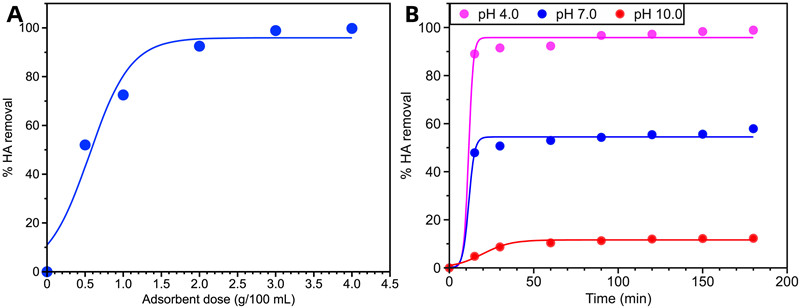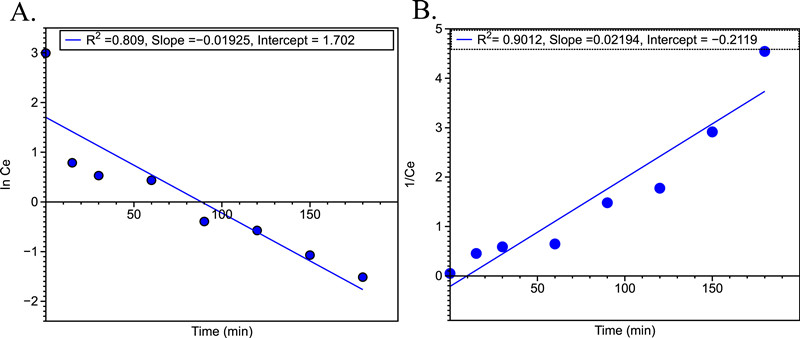XTIPC-University of Nottingham Trent Collaboratively Making Research Progress on the Removal of Organic Matter from Water by Nano Adsorbents
Editor: | Aug 26,2022
While the potable water disinfection schem has significantly reduced waterborne diseases, but development of disinfection byproducts (DBP) during this process has brought a global threat to the environment and human health. Among these, Humic acid (HA), and fulvic acid are the predominant natural organic matter (NOM) or dissolved organic carbon (DOC) in groundwater and surface water resources. The most notorious water pollutant, Humic acid (HA), transforms into carcinogenic byproducts during the disinfection process (chlorination) of water treatment,Chlorination, which is a standard disinfection treatment in developing countries. It has been reported to give rise attention to treat disinfection derivatives such as trihalomethanes (THMs), chloroform and dihaloacetonitriles. These toxic derivatives come into existence due to the interaction of HA with the chemicals resulting from the chlorination process. HA can become a serious contaminant in its own right because of superior binding and electrostatic interactions in combination with heavy metals, leading to the formation of metal-organic complexes that complicate their eradication from water. HA and its derived disinfectant byproducts have attracted increasing attention in the last years due to the regulations and potential human health concerns associated with them. Therefore, the removal of HA from water using effective technologies is an important research topic worldwide. A series of conventional processes such as coagulation, ozonation, ion exchange, adsorption have been developed in the past for the successful removal of HA, and considering their low efficiency in removing recalcitrant wastes, among those methods, adsorption approach has received wide attention. The relatively high price of some adsorbents (activated carbon, hematite, etc.) and the limited application scenarios have led to the need to find more cost-effective adsorption carriers. Bone char (BC) is expected to be a good adsorbent for organic matter due to its large specific surface area due to its excellent physicochemical properties, ease of production, low cost, eco-friendliness, and outstanding results in the remediation of wastewater (heavy metals and fluorides).
Based on this, Separation Materials and Technology research team of Xinjiang Technical Institute of Physics and Chemistry (XTIPC), Chinese Academy of Sciences, and collaborative research team from the University of Nottingham Trent in the UK have developed a low-cost and self-regenerating Calf bone char (CBC) based process to address the most pressing global problem of HA removal. CBC developed as a super adsorbent for HA can remove 92.1-100% of HA. Characterization of CBC were performed by a scanning electron microscope (SEM). In addition, various parameters of adsorption/desorption and self-regeneration of CBC adsorbent were experimentally determined. Results show that prepared CBC with a 112 m2/g surface area exhibited adsorption of 38.08 mg/g which is several folds higher than the typical amount of HA present in water. The reaction time was enough to remove HA which is the shorter HA time in comparison to other similar studies. The increase of HA from 0.5 to 5 g/L, raises HA removal (36.7–99.8%) while a pH decrease (10–4) led to increases in adsorption (12.3–98.3%). The adsorption data fitted well with the pseudo-second-order model, and the Langmuir isotherm which demonstrate that adsorption takes place by a monolayer formation. Thermodynamic constants supported the endothermic, spontaneous, and reversible nature of adsorption which can attain 100% HA removal. 100% regeneration of exhausted CBC by NaOH further supports the sustainability of the process. CBC as a new adsorbent material thus provides an economical and sustainable water pre-treatment procedure. Tus, the present study provides technical guidance for building a cost-effective and scalable process capable of providing clean water.
This research progress was published in Chemosphere Journal entitled as “Superior removal of humic acid from aqueous stream using novel calf bones charcoal Nano adsorbent in a reversible process” (Chemosphere, 2022, 301, 134673;Chemosphere, 2022, 307, 135756). This work was supported by Special Research Assistant Project of Xinjiang Technical Institute of Physics and Chemistry, Chinese Academy of Sciences (CAS) and Engineering and Physical Sciences Research Council (EPSRC), United Kingdom (UK).
Article:https://doi.org/10.1016/j.chemosphere.2022.134673

Fig. 1 Effect of adsorbent dose on HA removal (%). (B) The effect of pH on removal of HA (%) in real time

Fig. 2 Correlation coefficient (R2) of (A) Pseudo-first-order and (B) Pseudo-second-order
附件下载:
 (86) 991-3838931
(86) 991-3838931 lhskj@ms.xjb.ac.cn
lhskj@ms.xjb.ac.cn (86)991-3838957
(86)991-3838957 40-1 Beijing Road
Urumqi, XinjiangChina
40-1 Beijing Road
Urumqi, XinjiangChina